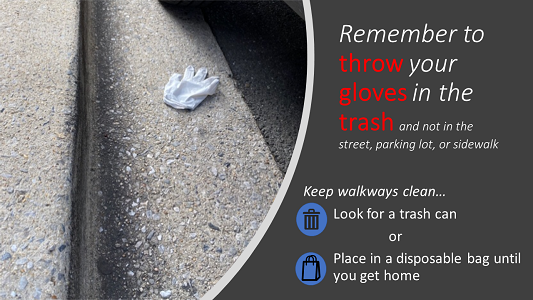Stormwater Discharges from Transportation Sources-Research, Tools, and Webcasts

Research is an important component in stormwater management. Research can update us on the most recent technologies, improved strategies, cost-effective data, or emerging issues that need to be addressed. Many of the resource listed on this page are specific to stormwater and transportation.
Long-Term Stormwater Planning
- Community Solutions for Stormwater Management: A Guide for Voluntary Long-Term Planning - Guide to assist states and local governments in developing and implementing effective long-term stormwater plans. This document describes how to develop a comprehensive long-term community stormwater plan that integrates stormwater management with communities' broader plans for economic development, infrastructure investment and environmental compliance.
Post-Construction
- Joint EPA-Federal Highway Administration (FHWA) Webcasts (Coming Soon) —This page provides links to webinars cohosted by EPA and FHWA that feature techniques that state and local transportation departments have implemented in their SWMPs to reduce the discharge of stormwater pollutants.
- Research—Information on EPA developments and related resources for those who want to know more about stormwater-related green infrastructure practices.
- Experimental Permeable Pavement Parking Lot and Rain Garden for Stormwater Management—Information on EPA’s green infrastructure research on long-term porous pavement to address stormwater management issues.
- National Cooperative Highway Research Program Exit —This program under the Transportation Research Board addresses issues state transportation departments suggest to find solutions. The research conducted also can provide useful information to local transportation departments and others.
Regional Planning
- Eco-Logical Approach Exit —This approach organizes current methods to identify natural resources and avoid, minimize, and mitigate impacts in a systematic, stepwise process. It was developed by a steering team consisting of representatives of federal agencies.
- Green Highways Partnership (GHP) Exit —The GHP is a voluntary public-private partnership that advances environmental stewardship in transportation planning, design, construction, operations, and maintenance.
- Watershed Resources Registry Exit—This interactive mapping tool can provide a framework and be tailored to characterize and prioritize natural resource management opportunities using a watershed approach. Preserving and/or restoring natural hydrology for stormwater is one element along with restoration and/or preservation of riparian zones, wetlands, and uplands.
- Stochastic Empirical Loading and Dilution Model (SELDM) Exit — SELDM is a stormwater-quality runoff model for highways and other land uses that estimates stormwater flows, pollutant loads, and concentrations from roads and upstream watersheds. The USGS developed SELDM in cooperation with the FHWA.
Site-specific
- Green Infrastructure — This page provides links to EPA and non-EPA Web pages that can provide information on how green infrastructure can be used to help mitigate climate change impacts.
- Context Sensitive Solutions -- Context Sensitive Solutions (CSS) is a collaborative, interdisciplinary approach that involves all stakeholders and leads to preserving and enhancing environmental resources along with other resources, while improving or maintaining safety, mobility, and infrastructure conditions.
- Context Sensitive Solutions in Designing Major Urban Thoroughfares for Walkable Communities —The report by the Institute for Transportation Engineers (ITE) can be used as a guide for roadway improvement projects.
Monitoring
- Caltrans Comprehensive Protocols Guidance Manual Exit —Caltrans has developed a number of monitoring, research, and applied studies.
- Washington State Department of Transportation Stormwater Monitoring Exit—This page describes the sort of monitoring being done, guidance documents, and summary reports.
Selecting Best Management Practices
- Caltrans BMP Retrofit Pilot Program Exit —This report discusses performance evaluation and cost of structural BMPs for treating stormwater runoff from Caltrans facilities.
- Evaluation of BMPs for Highway Runoff Control Exit —This guide is from the National Cooperative Highway Research Program (NCHRP) for selecting BMPs for highway runoff control.
- Stormwater Best Management Practices in an Ultra-Urban Setting:Exit Selection and Monitoring —Ultra-urban areas have high densities of paved surfaces. Buildings, parking facilities, urban streets, highways, or walkways cover a majority of the land area, with imperviousness typically greater than 50 percent in ultra-urban areas, and up to 100 percent in some cases.
- Stormwater Quality Benefits of a Porous Asphalt Overlay —This study documents the impacts of porous asphalt overlay to the quality of highway stormwater runoff.
- Tennessee State DOT Post-Construction Stormwater BMP Research Report —This report, written for the Tennessee Department of Transportation, includes research on other Department of Transportation post-construction stormwater activities, how other Departments of Transportation are handling post-construction stormwater from highway and facility sites, and a literature review of post-construction BMPs.
Specific Pollutants
- Preliminary Environmental Investigation of Heavy Metals in Highway Runoff —This report discusses the research done by the Civil and Environmental Engineering Department at Washington State University for Washington State Department of Transportation.
